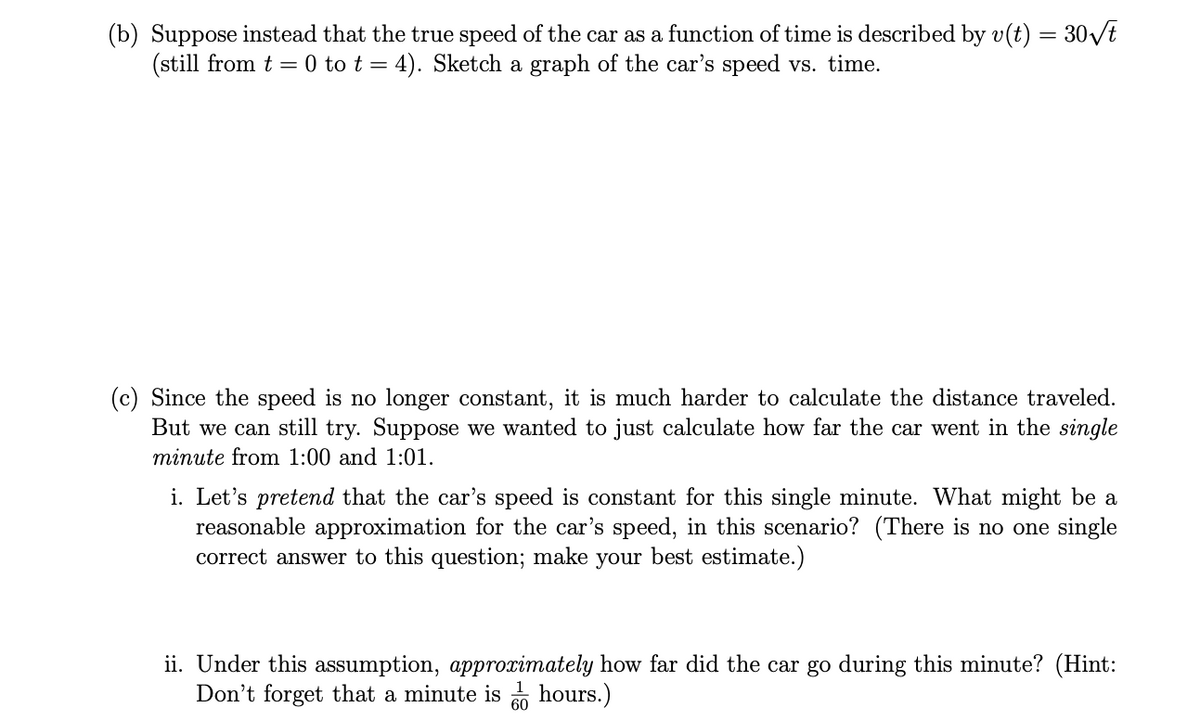(b) Suppose instead that the true speed of the car as a function of time is described by v(t) = 30√t (still from t = 0 to t = 4). Sketch a graph of the car's speed vs. time.
(b) Suppose instead that the true speed of the car as a function of time is described by v(t) = 30√t (still from t = 0 to t = 4). Sketch a graph of the car's speed vs. time.
Related questions
Question

Transcribed Image Text:(b) Suppose instead that the true speed of the car as a function of time is described by v(t) = 30√/t
(still from t = 0 to t = 4). Sketch a graph of the car's speed vs. time.
(c) Since the speed is no longer constant, it is much harder to calculate the distance traveled.
But we can still try. Suppose we wanted to calculate how far the car went in the sin
minute from 1:00 and 1:01.
i. Let's pretend that the car's speed is constant for this single minute. What might be a
reasonable approximation for the car's speed, in this scenario? (There is no one single
correct answer to this question; make your best estimate.)
ii. Under this assumption, approximately how far did the car go during this minute? (Hint:
Don't forget that a minute is hours.)
60
Expert Solution
This question has been solved!
Explore an expertly crafted, step-by-step solution for a thorough understanding of key concepts.
Step by step
Solved in 3 steps with 3 images
